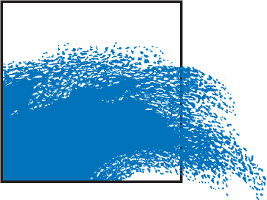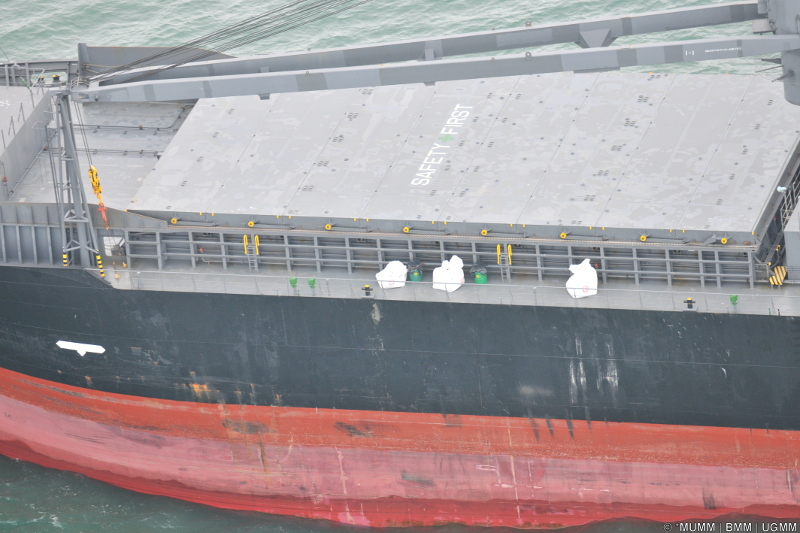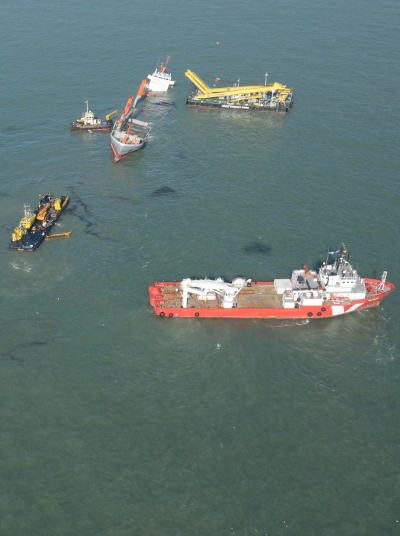Marine pollution off our coast in figures
Since the start of the air surveillance program in Belgium in 1991, MUMM maintains systematic records of all marine pollution in Belgium and the observed surrounding maritime areas. For example, an extensive database of marine pollution has been built up over a period of more than 25 years.
Operational oil pollution
As soon as an operational oil spill is detected in the wake of a vessel, it indicates a violation of the internationally applicable mineral oil discharge standards of Annex I of the MARPOL 73/78 Convention. Research and experiments at sea showed indeed to a visible trace of oil at sea from a ship always is the result of a discharge above the allowable concentration limit for oil (> 15ppm). A multiannual statistical analysis of illegal oil spills from ships carried out by MUMM, indicates that the number of operational oil spills significantly dropped off our coast.
The decreasing trend is, however, not identical to the number of discharges per year, the total contaminated area and the total contaminated volume, and its evolution is not so much continuously, but rather gradually reduced over the years. Two crucial policy measures have led to the most visible impact in the field. First of all, the North Sea was recognized by the International Maritime Organization in 1999 as a 'Special Area' for oil spills from ships, which means that from then on, the strictest international discharge standards applied. As a result, the number of contaminants and the contaminated area suddenly fell by half after 1999. The total volume of the observed oil has also decreased since then, but less markedly. A second important policy measure was the adoption of the European Port Reception Directive, which was only fully developed in European ports around 2004-2005. Since the introduction of the EU Directive to require all seagoing vessels calling at European ports to complete their oil debris in port reception facilities, making it very difficult for ships to illegally discharge large volumes of oil into the sea. MUMM has shown that this policy measure influenced the annual number of oil spills with large volumes in a clear way. After all, in the period after 2004-2005, the annual oil volumes observed dropped significantly by around 90 %.
Other aspects which further contributed to the observed decline and the prosecution of illegally discharging vessels, is the deterrent effect of both air surveillance and port inspections, the positive changes in training and awareness among seafarers, etc.
In 2015, for the first time, no operational oil pollution was observed in or near Belgian waters. That year, however, the surveillance aircraft underwent a long-term maintenance, making it unavailable for about half a year. In that time span, pollution control flights had to be carried out with a less performant back-up aircraft (without scientific sensors). In recent years, oil spills were sporadically spotted, and oil-discharging ships caught. The coming years will therefore have to show if the problem of illegal oil spills off our coast is completely under control.
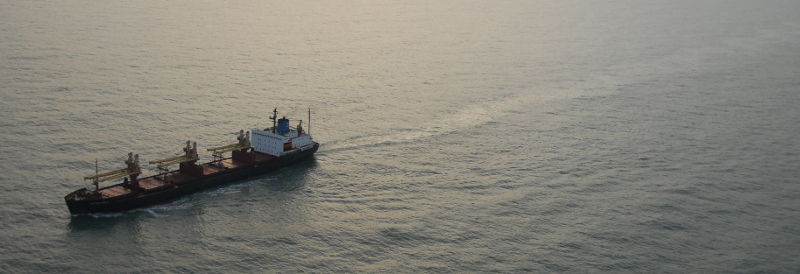
Other harmful liquids
In addition to the many oil spill detections, MUMM has also systematically recorded the observations of other operational marine spills, the so-called noxious liquid substances (NLS). These are often reffered to as 'chemical discharges', although not only chemicals but also vegetable oils and biodiesels, for example, fall under the NLS denominator.
The internationally applicable discharge standards for harmful liquids other than oil are contained in Appendix II of the MARPOL 73/78 Convention. Unlike a visible illegal mineral oil trail, many of the operational NLS discharges from ships observed by the aircraft are legally permitted at sea. Whether or not a discharge of other harmful substances is an infringement depends not so much on the visual characteristics of the substance, but rather on the type and where and how the substance was discharged into the sea by a ship. Did the discharge took place within or outside the territorial sea? Is there a discharge above or below the waterline? Does the ship sail at sufficient speed and is there sufficient water depth?
Unfortunately, from our observations of spills of other harmful substances at sea, the same declining trend can’t be derived as for mineral oil spills. The number of spills of other harmful liquids even increases slightly, though this can’t be shown yet statistically. Belgium is not the only North Sea country with these findings. France and Netherlands reported recent upward trends in chemical discharges from ships into their waters.
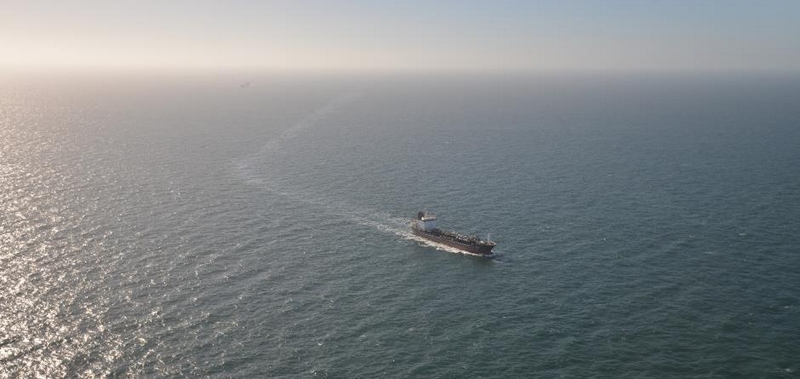
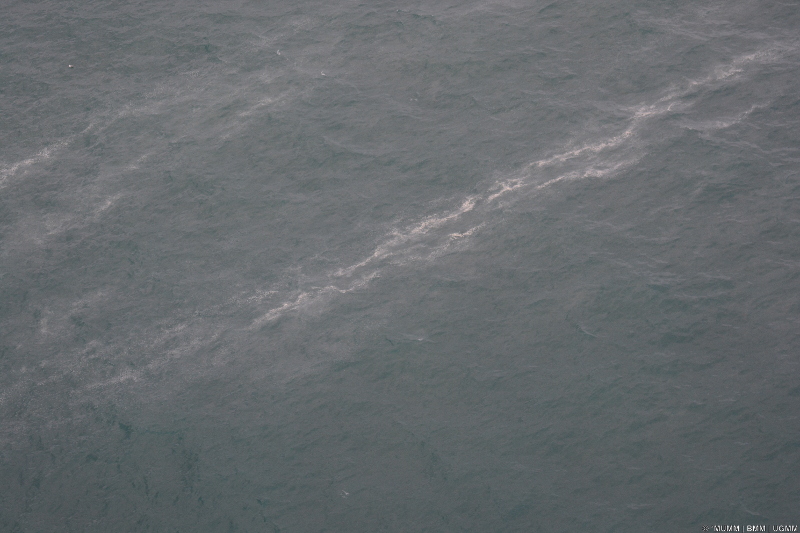
On the one hand, the MUMM data shows that operational pollution from other harmful substances has been observed over the years in lower numbers than oil spills, and on the other that the general problem of ship discharges off our coast is no longer of the same magnitude as before the turn of the century. However, in 2012 more chemical marine pollution was observed off our coast than oil pollution, a phenomenon that repeated itself in 2015. In 2017 the combined air surveillance statistics of all North Sea countries also showed this pattern, and for the first time since the start of air surveillance under the Bonn Agreement (since 1989), more discharges from other harmful liquids were observed than from oil. Moreover, since chemical discharges are often permitted far from the coast, the length of marine pollution from other harmful substances appears to be on average more than twice as long as with oil slicks.
Chemical discharges from ships remain a not inconsiderable problem in the North Sea, that require further and close monitoring and enforcement, both at sea and ashore.
One of the results of this chemical spills is the stranding of significant amounts of paraffin along the coasts of the southern North Sea. On the Belgian beaches, paraffin waxes appear 2 to 3 times a year in large pieces or as flakes. Pure paraffin is a natural constituent of crude oil and is visually a waxy, colourless and odourless solid substance. Brown and yellowish discolorations occur due to contamination with oil residues. Stranding of large quantities usually occur after or during periods with strong northerly wind. The negative effects, except for the view of the beaches, are that the paraffin is eaten by certain organisms. Small lumps are found in the stomachs of Norwegian petrels and dogs can be bothered if they eat large amounts of them.
The Marine Environment Protection Committee (MEPC) adopted amendments to MARPOL Annex II to strengthen, in specified sea areas, discharge requirements for cargo residues and tank washing containing persistent floating products with a high viscosity and/or a high melting point that can solidify under certain conditions (e.g. certain vegetable oils and paraffin-like cargoes), following concerns about the environmental impact of permissible discharges. New paragraphs were added to MARPOL Annex II Regulation 13 concerning the control of discharges of restudies of noxious liquid substances, to require prewash and discharge of residue/water mixture generated during the prewash to a reception facility, for specific products, in specified areas such as the North West European waters, Baltic Sea area, Western European waters and Norwegian Sea. (MEPC, 74th session, May 2019)
Sulphur emissions
In 2019, the Coast Guard aircraft of the MUMM monitors the sulphur emissions of ships in Belgian and neighboring waters for the fifth year in a row. 316 possible violations were found, which were systematically sent to the competent port inspection services for an on-board investigation. Approximately 90% of the ships off our coast appeared to follow the strict sulphur emission limits despite the associated high additional costs, which is good news for air quality. At the same time, however, this means that just under 10% of ships monitored at sea were probably in violation. More details can be found here.
Accidental marine pollution
The issue of marine pollution from ships is not limited to operational ship discharges. The particularly busy shipping traffic in the Belgian part of the North Sea (with the Pas de Calais and the two largest European ports of Rotterdam and Antwerp in our backyard) and the shallow sandbanks are factors that lead to the area being internationally recognized as a high-risk area for shipping accidents and accidental marine pollution. The list of historic maritime accidents off our coast shows that especially often collisions in our area can lead to accidental environmental damage.
Since 1991, the aircraft has successfully provided operational support in the form of air monitoring and air support to combat units during more than 20 different shipping accidents in the Belgian and surrounding sea areas. Each time an evaluation was made from the air of the seriousness of the accidental pollution and the threat to the coast, and the aircraft also had to accompany several recovery vessels to the larger, controllable parts of the accidental pollution.
For example, the aircraft was used by the government in support of crisis management during the incident with the tanker 'British Trent' in 1993, the collision between the 'Carina' and the 'Samia' in 1995, the stranding of the 'Heinrich Behrman' in 2001, the 'Tricolor' and 'Vicky' incident in 2002-2003, and more recently with the passage of the heavily damaged container ship 'Flaminia' in 2012, the salvage of the car carrier 'Baltic Ace' in 2014-15, or the incident with and the salvage of the 'Flinterstar' for Zeebrugge in 2015-16. For the 'Tricolor' and 'Flinterstar' incidents alone, more than 50 oil spills at sea were observed and reported to the authorities during the entire incident period, and the aircraft was giving support to the combat/recovery vessels at sea for weeks and months.
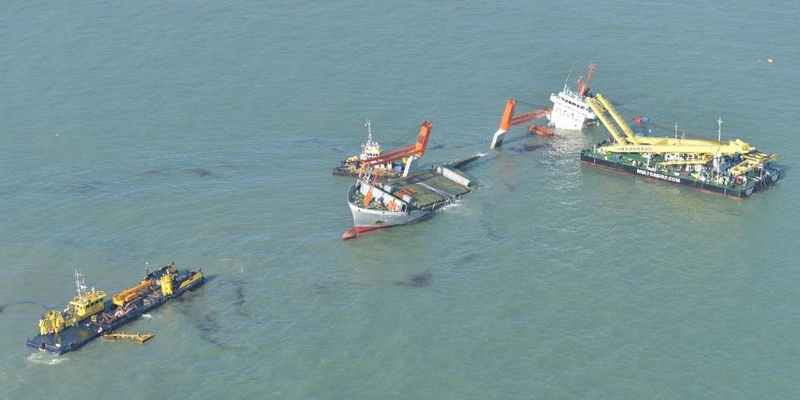
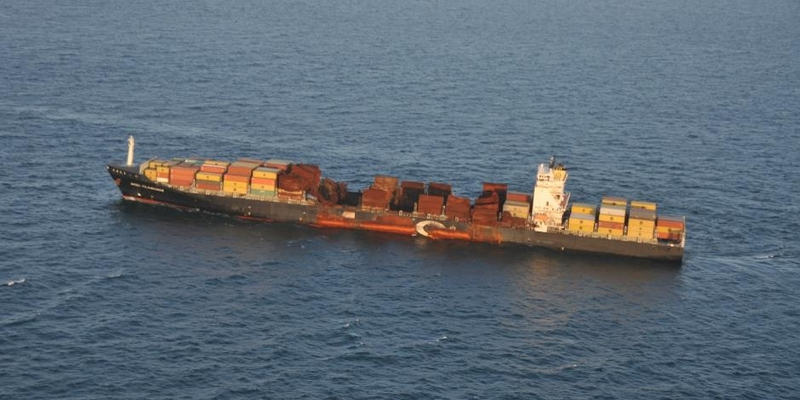
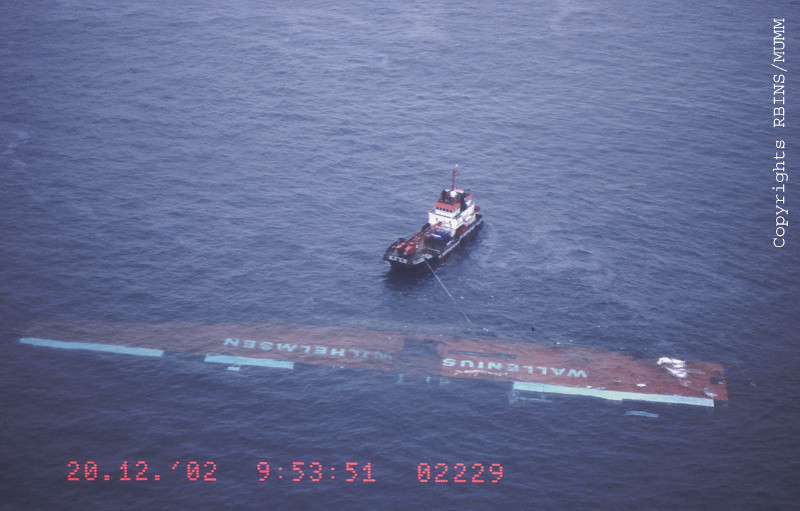
Overview of ship incidents where the coast guard aircraft was used for different purposes
| Year | Involved ships | Oil Volume |
|---|---|---|
| 1992 | Westhinder incident | 170 m³ |
| 1992 | Cast Muskox / Long Lin | 190 m³ |
| 1992 | Amer Fuji / Meritas | 225 m³ |
| 1992 | David gas / Athos | 185 m³ |
| 1993 | Aya / Wladyslaw Jagiello | 15 m³ |
| 1993 | British Trent / Western Winner | 10 m³ |
| 1995 | Carina / Samia | 45 m³ |
| 1995 | Spauwer | <10 m³ |
| 1997 | Mundial Car / Jane | 20 m³ |
| 2000 | Adelaide / Saar Ore | <10 m³ |
| 2001 | Vera / Music | 20 m³ |
| 2001 | Gudermes / St.Jacques II | 100 m³ |
| 2001 | Heinrich Behrmann | (Risk) |
| 2002-2004 | Tricolor / Kariba + storage room Tricolor | ~500 m³ |
| 2003 | Vicky | 190 m³ |
| 2007 | Pauline | <10 m³ |
| 2007 | Sapphire | 100 m³ |
| 2009 | High Progress / Advent | (Risk) |
| 2011 | Z700 Rapke | <1 m³ |
| 2012 | Flaminia | (Risk) |
| 2012-2015 | Baltic Ace / Corvus J + storage room Baltic Ace | 45 m³ |
| 2015-2016 | Flinterstar / Al Oraicq + Flinterstar storage | ~200 m³ |

